-
 Call Us Today 080 29711604
Call Us Today 080 29711604 -
 Mail Us Today enquiries@laqsh.com
Mail Us Today enquiries@laqsh.com - Job Vacancies

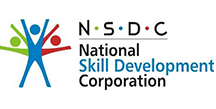
The National Skill Development Corporation India (NSDC) was set up to fulfill the growing need in India for skilled manpower across sectors and narrow the existing gap between the demand and supply of skills. NSDC aims to promote skill development by catalyzing creation of large, quality, for-profit vocational institutions. Its mandate is also to enable support systems such as quality assurance, information systems and train the trainer academies either directly or through partnerships. Over the next 10 years our mandate at LAQSH from NSDC is to train and provide jobs to 1.5 million students across the country.

NASSCOM aims to drive the overall growth of the global off shoring market and maintain India's leadership position, by taking up the role of a strategic advisor to the industry. One of Nasscom's aims is to help expand the quantity and quality of the talent pool in India. LAQSH has partnered with NASSCOM to bridge the gap between Industry and Academia.
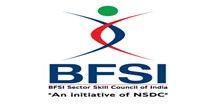
BFSI SSC strives to complement the existing vocational education system in meeting the entire value chain’s requirements of appropriately trained manpower in quantity and quality across all levels on a sustained and evolving basis.
Mission:
-> Upgrade skills to international standards through significant industry involvement.
-> Be a conduit of change through thought leadership, research, market intelligence and membership engagement.

Electronics Sector Skills Council of India envisions to enable a world class electronics manufacturing industry with an ecosystem for skill development and enhance employability of the large number of Indian human resource.
Mission:
To establish a structured mechanism wherein ESSCI will facilitate & collaborate with NSDC in strengthening the existing vocational education system for skills development in electronics sector & upgrade vocational training system for the industry to achieve global standards in manpower productivity.

Together, may we give our youth and women the skilling roots to grow & career wings to fly.
Mission:
-> Conducting Industry and market studies to determine the skill gap in key segments in the Beauty and Wellness industry on an on-going basis
-> Development of Occupations/Skills Catalogue and Occupational Standards
-> Creating awareness about the Beauty and Wellness industry
-> Involving all stakeholders – employers, learners, academia and vocational bodies – in the skill development exercise
-> Accredit/Affiliate training providers and Certification of learners/workforce
-> Facilitate/Conduct Training of Trainers and Training of Assessors
-> Establish/facilitate in-house Training Centers and Centers of Excellence
-> Set up an effective Labor Market Information System (LMIS), and
-> Benchmark Indian beauty and wellness education with international standards
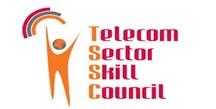
The Telecom Sector Skill Council is committed to develop world class skilled manpower for the Telecom industry
Mission:
Telecom Sector Skill Council, a non-profit industry driven body set up under the aegis of the NSDC would strive to:
-> Create a viable ecosystem by implementing an "integrated approach" by prioritizing initiatives that can have a catalytic effect to develop competency based framework of world class excellence for skill development and quality assurance of personnel in the Telecom sector
-> Narrow the existing gap between demand and supply of skills by increased collaboration between the three primary stakeholders i.e. HR, Industry and academia
-> Up-skill and certify 45 Lacs personnel in 150 trades, train 24,000 trainers, accredit 500 training organizations and to cover the whole country progressively over a period of 10 years by signing MOUs with around 200 industries
-> Facilitate Training the Trainer
-> Develop necessary frameworks for standards, curriculum and quality assurance at all levels in vocational / technical programs to meet the needs of the industry.
-> Participate in regional and international vocational telecom sector development initiatives
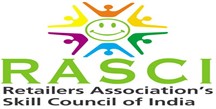
The RASCI Vision
“Create a sustainable industry aligned ecosystem by promoting retail skill development, benefiting millions in India to get respectable employment opportunities for serving customers and other stakeholders.”
The RASCI Mission
“Develop over 10 million industry competent workforce by 2022 through establishment of National Occupational Standards, Labour Market Information System, Accreditation of training partners / vocational institutions, Certification of Trainers and facilitation of learner assessments and certifications.”

Let's all learn - everyone will grow:
" Providing satisfactory, appropriate and useful elementary education for all children, providing social, gender equality, regional equality and ensuring full participation of the community in the management of schools "
Mission:
Guidelines to educate teachers to develop universal human values and construct the community by providing access to school, documentation and school for all children between the ages of 6 and 14, including specially equipped children.
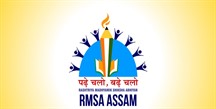
Rashtriya Madhyamik Siksha Abhijan (RMSA), Assam is a comprehensive and integrated flagship programme of the Government of India (GOI), implemented in the state of Assam for providing quality and meaningful education to all children in the age group 14-16 years of age for Secondary Schools and 16-18 years of age for Higher Secondary Schools in Assam .RMSA has a vision to make secondary education available, accessible and affordable to all young persons.
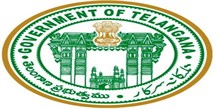
"Rashtriya Madhyamik Shiksha Abhiyan" is a Centrally Sponsored Scheme. In our State this project is being implemented from the academic year 2009-10 to 2019-20.
Goals & Objectives
-> Establishing Secondary School within a radius of 5kms.
-> Achieving 75% access by 2012-13 and 100% access by 2017-18.
-> Achieving 100% retention by 2020.
-> Providing necessary physical facilities, teaching and non – teaching staff for every secondary school
-> To see that no student shall be deprived of secondary education because of gender disparity, socio economic reasons, disability or any other reasons.
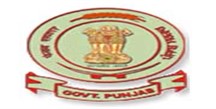
This scheme was launched in March, 2009 with the objective to enhance access to secondary education and to improve its quality. It is envisaged to achieve an enrolment rate of 75% from 52.26% in 2005-06 at secondary stage within 5 years of implementation of the scheme by providing a secondary school within a reasonable distance of any habitation. The other objectives include improving quality of education imparted at secondary level through making all secondary schools conform to prescribed norms, removing gender, socio-economic and disability barriers, providing universal access to secondary level education by 2017, i.e., by the end of 12th Five Year Plan and achieving universal retention by 2020.
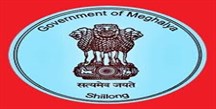
Mission:
To ensure that all secondary schools have physical facilities, staff and supplies at least according to the prescribed standards through financial support in case of Government/ Local Body and Government aided schools, and appropriate regulatory mechanism in the case of other schools.
To improve access to secondary schooling to all young persons according to norms through proximate location (say, Secondary Schools within 5 kms., and Higher Secondary Schools within 7-10 kms..) /efficient and safe transport arrangements/residential facilities, depending on local circumstances including open schooling. However in hilly and difficult areas, these norms can be relaxed. Preferably residential schools may be set up in such areas.
To ensure that no child is deprived of secondary education of satisfactory quality due to gender, socio-economic, disability and other barriers.
To improve quality of secondary education resulting in enhanced intellectual, social and cultural learning.
To ensure that all students pursuing secondary education receive education of good quality.
Achievement of the above objectives would also, inter-alia, signify substantial progress in the direction of the
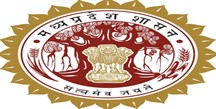

The scheme was launched in the State of Jammu & Kashmir in 2009 with the objective to enhance access to secondary education and to improve its quality. The scheme is implemented through Noor Society in the State. It is envisaged to achieve enrolment at secondary stage within 5 years of implementation of the scheme by providing a secondary school within a reasonable distance of any habitation. The other objectives include improving quality of education imparted at secondary level through making all secondary schools conform to prescribed norms, removing gender, socio-economic and disability barriers, providing universal access to secondary level education by 2017, i.e., by the end of 12th Five Year Plan and achieving universal retention by 2020.

NVEQF (now NSQF) is a nationally integrated education and competency based skill framework that will provide for multiple pathways both within vocational education and between general and vocational education to link one level of learning to another higher level and enable learners to progress to higher levels from any starting point in education and skill system. It is a framework to enhance employability skills of our students by introducing applied learning skills in integration with academic stream.
Haryana is the only state in the country having successfully launched and implemented NVEQF pilot project allotted by MHRD during 2012-13. The State Govt. Introduced 4 trades i.e. Retail, Security, Automobile and IT/ITes two each in 40 schools in 8 districts of Haryana during 2012-13. Now the students would be graduating L-4 along with 10+2 in May/June 2014. These skills start with L-1 from class 9th and end with L-4 on completion of class 12th at school level. Thereafter there are multiple pathways where under students can pursue higher studies and those who attain the age of 18 and are desirous of placement, the SSCs have the mandate for their placements. SSCs (Sector Skill Counc
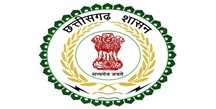
The vision for secondary education is to make good quality education available, accessible and affordable to all young persons in the age group of 14-18 years. With this vision in mind, the following is to be achieved:
1. To provide a secondary school within a reasonable distance of any habitation, which should be 5 kilometer for secondary schools and 7 -10 kilometers for higher secondary schools
2. Ensure universal access of secondary education by 2017 (GER of 100%), and Universal retention by 2020.
3. Providing access to secondary education with special references to economically weaker sections of the society, the educationally backward, the girls and the disabled children residing in rural areas and other marginalized categories like SC, ST, OBC and Educationally Backward Minorities (EBM)

Karnataka Vocational Training & Skills Development Corporation was set up to ensure steady flow of skilled manpower to industries. LAQSH is a premium partner and has trained over 4000 students across Karnataka in cities like Tumkur,Shimoga, Hubli, Mangalore,Udupi, Mysore and Bangalore on KPO, English Language, Computers and Life skills.
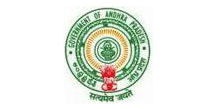
Employment Generation and Marketing Mission (EGMM) is a society set up by the Department of Rural Development of the Andhra Pradesh (AP) Government to provide employment to the rural unemployed youth. EGMM works in a public-private partnership mode with Government, companies and the rural communities as its stakeholders. The entire approach is a bottom-up approach, tailored to move the rural poor from the unorganized to the organized labor market. LAQSH is a partner of EGMM and has a mandate to train students across 6 districts in courses for the Hospitality , BPO, Retail Industries.